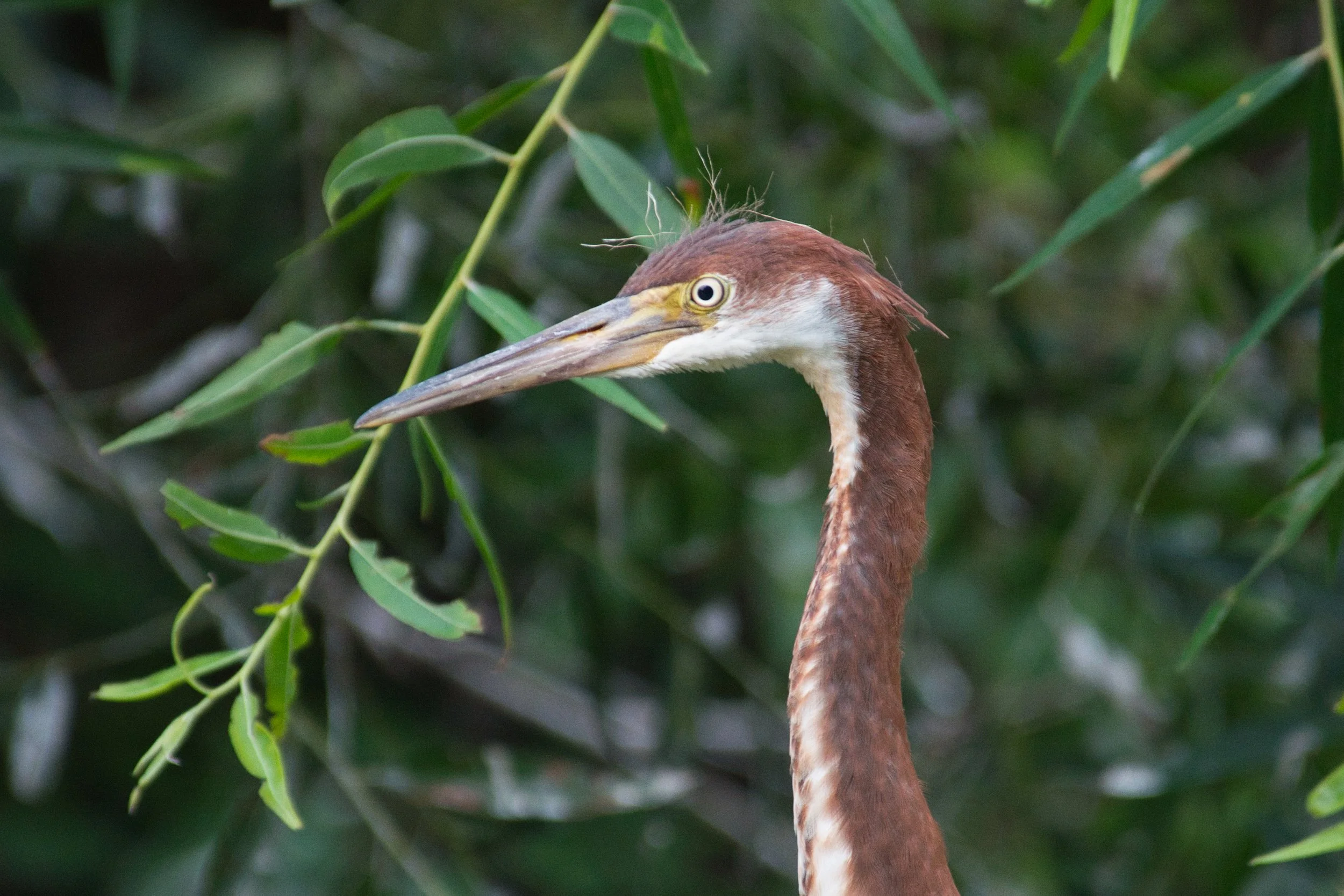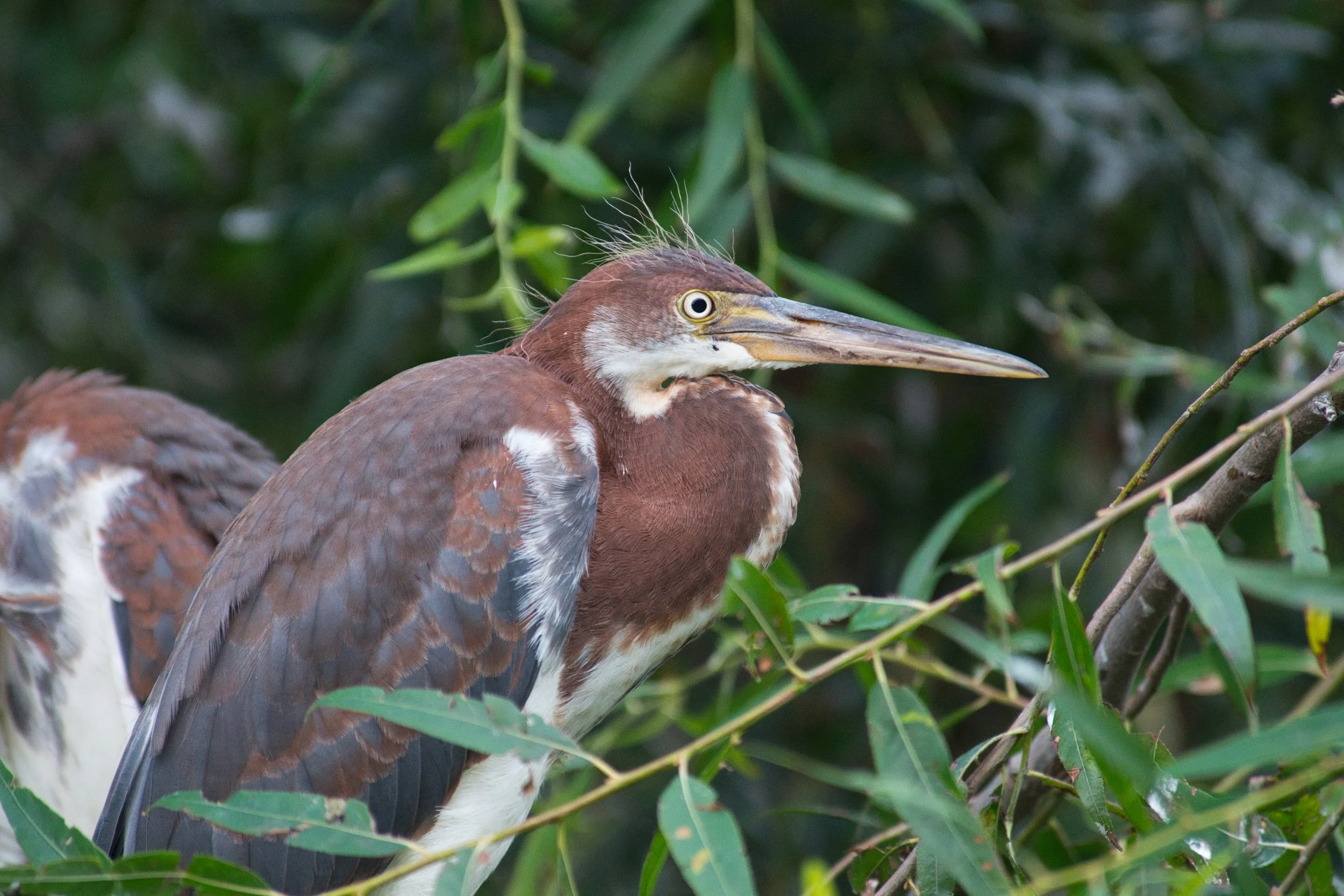The Green Heron
The Green Heron (Butorides virescens), a compact bird indigenous to North and Central America, is a regular inhabitant of the Cypress Wetlands. This heron, characterized by a glossy greenish-black cap and a greenish back, bears wings that blend from grey-black into hues of green or blue. It possesses a chestnut neck with a white line adorning the front, grey underparts, and short yellow legs, and its dark bill ends in a sharp point. Adult Green Herons are relatively small, measuring about 44 cm in length, with a wingspan of between 25.2 and 26.8 inches, and weigh around 240 grams. Notably, females tend to be smaller than males, with duller and lighter plumage, especially during the breeding season. As for their calls, you might hear a sudden loud 'kyow' or a subdued series of 'kuk' calls. During courtship, males engage in a variety of vocal displays, including a 'raah-rahh' call and a rhythmic 'whoom-whoom-whoom' in flight. Green Herons typically inhabit small wetlands in low-lying areas and are most conspicuous during dusk and dawn, making the Cypress Wetlands an ideal habitat for them 1.
Conservation Status and Efforts
The conservation status of the Green Heron, a small heron native to North and Central America, presents an interesting case study in the challenges faced by wildlife in the modern world. Like many other species, the Green Heron's survival is intrinsically linked to the preservation of its natural habitats. Unfortunately, habitat loss poses a significant threat to this species, due in large part to human activities that alter the environment. This includes the outright loss of wetlands due to urban development, agriculture, and climate change, as well as the less conspicuous but equally damaging practice of "tidying up" vegetation around bodies of water such as ponds, streams, rivers, and lakes.
Despite these threats, the Green Heron has demonstrated a certain level of resilience. The species is considered to be in decline, but not critically so, suggesting that it has been able to adapt to some degree to the changes in its environment. This is likely due to the heron's wide distribution across North and Central America, as well as its adaptability to different types of wetland environments. This adaptability means that, while some populations may be affected by habitat loss, others may be able to persist and even thrive in altered environments.
However, it's important to note that the overall population of this widespread heron remains robust enough that in most areas it does not require immediate conservation attention. This is a testament to the Green Heron's resilience, but it does not mean that the species is out of danger. On the contrary, the fact that it is not currently considered critically endangered should serve as a call to action rather than an excuse for complacency. While it may not be on the brink of extinction, the Green Heron's declining population is a clear sign that its habitat needs protection.
In recognition of this need for action, various conservation measures have been put in place. The 2016 State of the Birds report, a comprehensive study of bird populations in the United States, assigned the Green Heron a "concern score" of 11 out of 20. This score indicates a moderate level of concern, but not enough to warrant inclusion on the Watch List of most threatened species. This may seem like good news, but it's worth noting that a score of 11 still signifies a species that is facing significant threats and needs attention.
In conclusion, while the Green Heron is not currently considered critically endangered, it is a species under threat. Its declining population, caused primarily by habitat loss, is a sign of the broader environmental challenges we face today. However, with concerted conservation efforts and a commitment to protecting the habitats these birds rely on, there is hope that the Green Heron's decline can be halted and even reversed. As we move forward, it will be crucial to balance human needs with the preservation of the natural world, ensuring a future where species like the Green Heron can continue to thrive.











